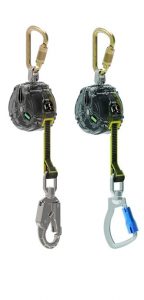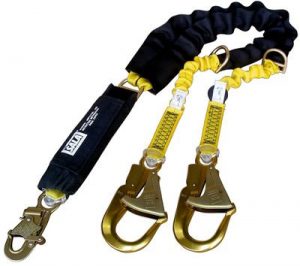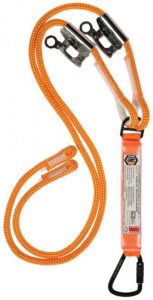Connection Devices
The connection device can be a choice of many things. It essentially ensures that the user is connected between the anchorage device and their harness by a device that will secure them in the event of a fall. The device must perform a function of absorbing energy.
Therefore, the use of a lanyard with a shock absorber, a stand-alone shock absorber or a self-retracting lifeline are choices often made by people to provide their safety.
Some examples of connection devices include:
A shock absorbing system must ensure that the energy transferred to the user is no more than 6kN (approximately 600kg of force) in the instance that a fall event occurs. Many SRLs in the market improve this minimum benchmark by ensuring that no more than 4kN is transferred.
Connection devices include the attachment hardware that is used to secure the user between the energy absorbing device, the anchor and the user’s harness.
Connectors must pass the minimum requirements of ASNZS 1891.1 or ASNZS 1891.3 to be deemed suitable for use in the Australian market, however there are also a number of international standards that are applicable in industry and recognised under 1891.3.



